Drawing on their own journey supporting aging parents, Sree and Sara Veda are pairing scientific training with genuine compassion to launch a Griswold franchise built on empathy and integrity.
For Sree and Sara Veda, caregiving has never been theoretical — it’s personal.
“We’ve experienced the challenges of helping our parents age at home,” Sree said. “I grew up with a big family and my father needed care at home. My mother is still alive but has limited mobility — she also needs home care. For my wife, her parents also needed assistance. We were able to help them through these services, and I know how difficult it is to support your parents as they age. That gave me a firsthand understanding of how important and necessary home care really is.”
After long careers in science and entrepreneurship, the couple is taking on a new mission: helping families in their community care for aging loved ones with dignity. With their opening in Matthews, North Carolina, they are using their personal experiences and professional skills to build a business that’s not only impactful but deeply needed. Compassion, they say, is the cornerstone — and gave them the right tools to lead with heart.
1851 Franchise spoke with Sree to learn more about his background, what drew the couple to Griswold and their plans for the future.
1851 Franchise: Frame your personal story for us. What do you want us to know?
Sree Veda: My background is as a PhD scientist, and my wife Sara is a scientist too. I had my own biotech company and also worked as a clinical consultant for a diagnostics company. But even before we started that business, we were thinking about home care and franchising opportunities. At the time, we didn’t move forward with it. But after selling the diagnostic lab business, I immediately started looking into other opportunities. I talked with a few agencies and finally landed on Griswold.
A big part of that decision came from our personal lives. We’ve experienced the challenges of helping our parents age at home. I grew up with sisters and my father needed care at home. My mother is still alive but has limited mobility — she also needs home care. For my wife, her parents also needed assistance. We were able to help them through these services, and I know how difficult it is to support your parents as they age. That gave me a firsthand understanding of how important and necessary home care really is.
1851: What was your perception of franchising prior to becoming a franchisee, and what do you want people to know about franchising now that you are in it?
Sree: I’m not from the senior care industry — I’m not a CNA or anything like that. This is a totally new space for me. But with my previous business experience, I had an idea of what it takes to run a business. I felt that franchising would be the better route because it gives you support, training and systems. Griswold made that transition easier for me.
1851: What made you pick this brand? What excites you most about this company?
Sree: What really attracted me to Griswold was the type of help they offer franchisees. I felt like it was better than what other franchisors were offering. From our very first conversations, I felt like Griswold aligned with our values and mission. It’s easier to build something that’s already established when you believe in how it operates. We liked how Griswold supports its franchisees — the systems, the network and the resources.
1851: What do you hope to achieve with your business? What are your plans for growth?
Sree: Our goal is to continue helping seniors in a compassionate and ethical way. That’s really the most important thing. Compassion is a key part of this service. We want to provide excellent care, use the right caregivers and do everything in a way that builds trust. That’s how we plan to grow.
1851: Is there anything else about your story you want us to know?
Sree: Both of our children are looking to go into health care, so we’re hoping they will help with the business in the future. This could be something we pass down to them — something meaningful and lasting.
1851: What advice do you have for other people thinking about becoming franchise owners?
Sree: An agency like this should always be answering the phone — that’s the first thing. You need to listen carefully, be nice and be compassionate. That’s how you build a strong business in this space.
ABOUT GRISWOLD
With 196 locations across 31 states, Griswold is one of the country’s top home care companies, providing professional, compassionate Caregivers 24/7. Griswold’s “Live Assured” promise gives both clients and their loved ones peace of mind, so they can live without the weight of worry. Griswold helps adults maintain quality of life despite advanced age, onset of illness, or post-surgery recovery through services including companion care, home services, personal care, and respite care. Founded by the late Jean Griswold in 1982, the company has maintained its founder’s profound sense of empathy for older and disabled adults and those living with chronic conditions. In 2024, Griswold was ranked #206 on Entrepreneur's Franchise 500 and named a 2023, 2024 and 2025 Best of Home Care® Endorsed National Provider. For more information, visit or call 215.402.0200.

 704-552-8581
704-552-8581




 Service Areas
Service Areas























